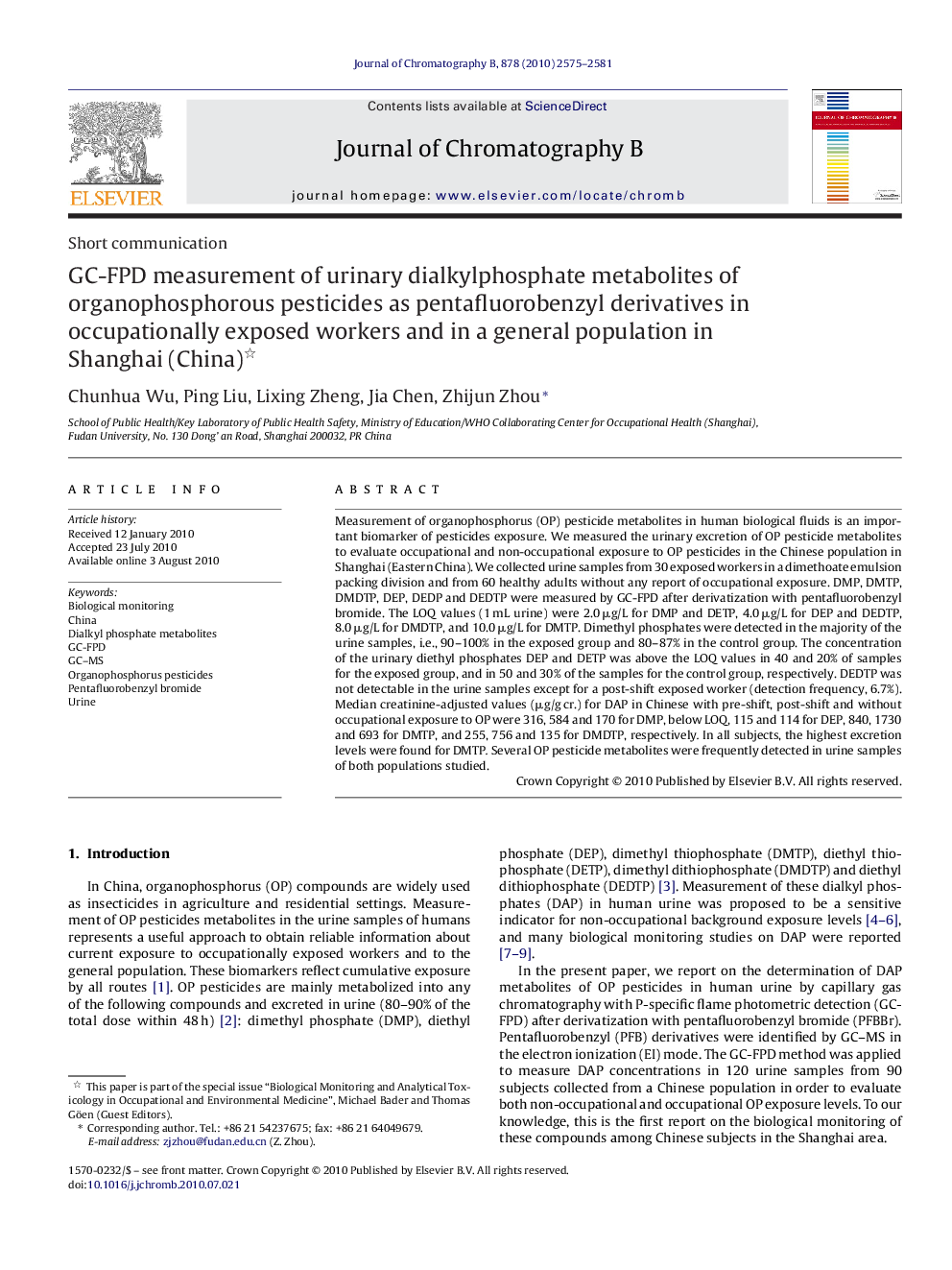| Article ID | Journal | Published Year | Pages | File Type |
|---|---|---|---|---|
| 1213768 | Journal of Chromatography B | 2010 | 7 Pages |
Measurement of organophosphorus (OP) pesticide metabolites in human biological fluids is an important biomarker of pesticides exposure. We measured the urinary excretion of OP pesticide metabolites to evaluate occupational and non-occupational exposure to OP pesticides in the Chinese population in Shanghai (Eastern China). We collected urine samples from 30 exposed workers in a dimethoate emulsion packing division and from 60 healthy adults without any report of occupational exposure. DMP, DMTP, DMDTP, DEP, DEDP and DEDTP were measured by GC-FPD after derivatization with pentafluorobenzyl bromide. The LOQ values (1 mL urine) were 2.0 μg/L for DMP and DETP, 4.0 μg/L for DEP and DEDTP, 8.0 μg/L for DMDTP, and 10.0 μg/L for DMTP. Dimethyl phosphates were detected in the majority of the urine samples, i.e., 90–100% in the exposed group and 80–87% in the control group. The concentration of the urinary diethyl phosphates DEP and DETP was above the LOQ values in 40 and 20% of samples for the exposed group, and in 50 and 30% of the samples for the control group, respectively. DEDTP was not detectable in the urine samples except for a post-shift exposed worker (detection frequency, 6.7%). Median creatinine-adjusted values (μg/g cr.) for DAP in Chinese with pre-shift, post-shift and without occupational exposure to OP were 316, 584 and 170 for DMP, below LOQ, 115 and 114 for DEP, 840, 1730 and 693 for DMTP, and 255, 756 and 135 for DMDTP, respectively. In all subjects, the highest excretion levels were found for DMTP. Several OP pesticide metabolites were frequently detected in urine samples of both populations studied.
